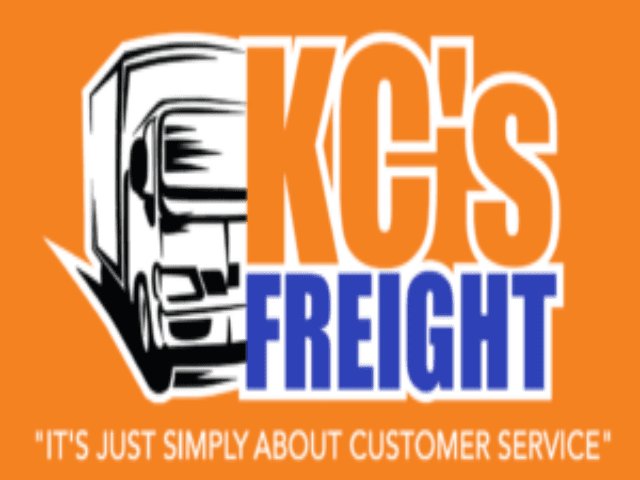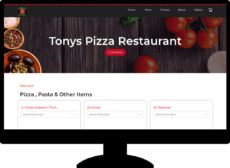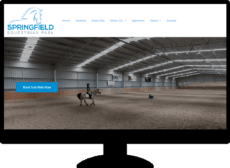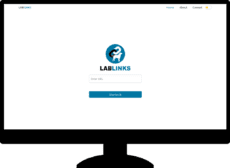
In today’s digital age, having a strong online presence isn’t just a luxury for small businesses—it’s a necessity. A well-designed website can be the difference between thriving and merely surviving. When potential customers search for services or products, your website often forms their first impression of your business.
With our small business website design services we can help you build up a strong online presence helping to attract new clients. It’s not just about aesthetics; it’s about functionality, user experience, and conveying your brand’s unique story. Let’s dive into how you can create a website that not only looks great but also drives growth for your small business.
What our clients are saying
Helping businesses of all sizes succeed with technology






Need help with a website for your business? Contact AGR Technology for a free proposal
A snapshot of our work
Importance of Website Design for Small Business
A well-designed website boosts the credibility of small businesses. When potential customers visit a site, they form their first impressions within seconds. A polished, professional website signals that the business is trustworthy and capable.
Effective website design increases user engagement. A user-friendly interface, clear navigation, and mobile responsiveness improve visitor experience. For instance, clean layouts and intuitive menus keep users interested and encourage exploration.
Good website design helps in search engine optimisation (SEO). Search engines, like Google, prioritise websites with fast loading times and optimised content. Better visibility in search results leads to increased traffic and more customer inquiries.
An aesthetically pleasing website showcases brand identity. It communicates a business’s values, mission, and story, differentiating it from competitors. Cohesive visual elements, like logos and color schemes, reinforce brand recognition.
Investing in proper website design enhances customer retention. Engaged visitors are more likely to return and become loyal customers. Features like clear calls-to-action and easy purchasing processes simplify user interactions, increasing conversions and sales.
Essential Elements of a Small Business Website
A well-designed website for a small business maximises user experience, engagement, and conversion rates.
User-friendly Navigation
Effective websites employ easy-to-use navigation. Ensure the menu is simple, allowing users to find information quickly. Group related items under relevant headings, such as “Products,” “Services,” and “Contact.” Use a consistent structure across all pages.
High-quality Images and Visuals
Visuals significantly impact user engagement. Incorporate high-resolution images showcasing products or services. We can help design relevant infographics to explain processes or data. Ensuring all visuals are optimised for quick loading to enhance user experience.
Consistent Branding
Maintaining consistent branding across the site is key like using the same logo, color scheme, and font styles. This creates a cohesive look and reinforces brand identity. We update all branding elements to match any changes in the business’s visual identity.
Engaging Content
Content keeps visitors informed and interested. Provide detailed product descriptions, case studies, and blog posts. Include client testimonials and social proof. Ensure all content is well-written, relevant, and updated frequently for accuracy and SEO.
Best Practices for Small Business Website Design
Small businesses benefit greatly from quality website design. Here are essential practices to follow.
Choose a Reader-friendly Font
Select fonts that enhance readability. Avoid overly decorative fonts which distract readers. Common choices include Arial, Verdana, and Helvetica. They maintain clarity across devices.
Optimise for Mobile
Ensure the website displays correctly on mobile devices. Use responsive design techniques to accommodate various screen sizes. Test across multiple devices to ensure optimal functionality.
Use Plenty of White Space
Incorporate white space to improve content flow. This technique helps readers focus on important information. It also avoids overwhelming users with cluttered pages.
Include Clear Calls to Action
Employ clear calls to action (CTAs) to guide user interaction. Use phrases like “Contact Us” or “Get a Quote”. Place them prominently so visitors can easily act.
Enhancing User Experience (UX)
Creating an optimal user experience (UX) is crucial for small business websites to retain and engage visitors. UX drives user satisfaction, engagement, and conversion rates.
Simplified Navigation
User-friendly navigation is critical for enhancing UX. Organized menus, clearly labeled sections, and intuitive designs enable users to find information quickly. For example:
- Logical Menu Structure: Categorize menu items logically to guide users effortlessly.
- Clear Labels: Use descriptive text for links, e.g., “Services” instead of “What We Do.”
- Clickable Elements: Ensure clickable elements stand out.
- Search Functionality: Include a search bar to help users locate specific content.
Fast Page Load Times
Fast page load times significantly impact UX. Users expect quick access to content, and slow websites lead to higher bounce rates. Implement these strategies:
- Optimize Images: Compress images without losing quality.
- Leverage Caching: Use browser caching to store frequently accessed files.
- Minimize HTTP Requests: Reduce the number of elements on a page.
- Use Content Delivery Networks (CDNs): Distribute content efficiently, speeding up load times for international users.
By focusing on these aspects, small business websites can create a seamless and engaging user experience, driving customer satisfaction and conversions. At AGR Technology we include all these best practices and more for our client projects.
SEO Optimisation
For small business websites, SEO optimisation drives organic traffic and improves search engine rankings.
Relevant Keywords
Identify relevant keywords to target your audience effectively. We can assist you in finding terms with high search volume and moderate competition. For example, “local bakery” and “best cakes Sydney” enhance local search focus.
Quality Content
Create quality content to engage visitors and improve SEO. Write articles, blog posts, and FAQs that address common questions and concerns relevant to your services. Ensure content is original, informative, and regularly updated. For instance, detailed service descriptions, case studies, and customer testimonials build trust and credibility.
We can help you take care of your content needs and ensure your website is regularly kept up-to-date.
Example Designs and Inspirations
Examining existing websites offers valuable insights and inspiration for designing small business websites. Reviewing effective designs helps identify successful strategies and avoid common pitfalls.
- Local Cafe: A local cafe website often features earthy tones, detailed images of food items, and a clean layout. The design highlights the menu, location, and unique selling points. The site exudes a welcoming atmosphere and promotes local culture.
- Boutique Store: Boutique store websites usually adopt a minimalist approach with high-quality visuals and elegant fonts. They emphasise their products through attractive galleries and streamlined e-commerce functionality. Product descriptions and reviews enhance customer trust and engagement.
- Freelance Designer: Freelance designer websites showcase expertise via portfolios, client testimonials, and detailed service descriptions. The layout is often avant-garde, using creative elements and unique layouts to reflect the designer’s style and attract potential clients.
- Professional Services: Small businesses offering professional services like accounting or consulting frequently employ straightforward design with clear navigation, professional imagery, and prominent call-to-action buttons. They highlight credentials, services, and client results to instill trust.
- Health and Wellness: Health and wellness websites feature calming colors, user-friendly interfaces, and informative content. Integration of appointment booking systems, client testimonials, and detailed service pages helps build a solid client base.
- eCommerce websites: eCommerce websites are designed to feature different products and collections of products for sale including physical products that can be posted out as well as digital products like courses or audio files that can be purchased and downloaded electronically.
By exploring these examples, small businesses can tailor website designs that resonate with their target audience, promote their brand, and ultimately drive conversions.
A well-designed website is more than just a digital storefront; it’s a powerful tool for small businesses to connect with their audience and drive growth. Prioritising user-friendly interfaces, clear navigation, and mobile responsiveness can significantly enhance user experience and foster brand loyalty. By incorporating key elements like engaging visuals, cohesive branding, and quality content, small businesses can create websites that not only attract but also retain customers.
Examining various design inspirations tailored to different business types can provide valuable insights and ideas. Whether you’re running a local cafe, a boutique store, or offering professional services, a thoughtfully designed website can set you apart from the competition. Embrace new practices like simplified navigation and SEO optimization to ensure your website performs well and meets the needs of your audience. Investing in a robust online presence is essential for small business success in today’s digital landscape.
Need help with a website for your business? Contact AGR Technology for a free proposal
Frequently Asked Questions
Why is a robust online presence important for small businesses?
A robust online presence is critical for small businesses as it increases visibility, helps attract and engage customers, and builds brand loyalty. A well-designed website ensures customers have a positive experience, making them more likely to return and make purchases.
What key elements should a small business website include?
A small business website should include user-friendly navigation, mobile responsiveness, clear branding, engaging content, and fast loading times. These elements enhance user experience, making it easier for customers to find information and interact with the business.
How does mobile responsiveness impact a small business website?
Mobile responsiveness ensures that the website functions well on various devices, such as smartphones and tablets. This is essential as more users access websites on mobile devices, and a responsive design helps retain these visitors by providing a seamless experience.
What role does SEO play in website design for small businesses?
SEO (Search Engine Optimisation) helps improve a website’s visibility on search engines, making it easier for potential customers to find the business online. Incorporating relevant keywords, high-quality content, and proper metadata can enhance search rankings and drive organic traffic.
What are some new practices in website design for small businesses?
New practices include simplified navigation, faster loading times, and enhanced SEO optimisation through relevant keywords and quality content. These practices improve user experience and search engine rankings, helping businesses attract and retain customers.
How can engaging content benefit a small business website?
Engaging content captures the attention of visitors, encourages them to spend more time on the site, and motivates them to take action, such as making a purchase or signing up for a newsletter. It also helps build trust and establishes the business as an authority in its industry.
Why is clear navigation important for a small business website?
Clear navigation ensures that visitors can easily find the information they need without frustration. A well-organised navigation menu with clear labels helps improve user experience, reducing bounce rates and increasing the likelihood of conversions.
![logo-new-23[1] logo-new-23[1]](https://cdn-ihdfn.nitrocdn.com/eZVJvoSTyVixkEUySRKiaseNtUlmgCyu/assets/images/optimized/rev-4edbb71/agrtech.com.au/wp-content/uploads/elementor/thumbs/logo-new-231-qad2sqbr9f0wlvza81xod18hkirbk9apc0elfhpco4.png)











